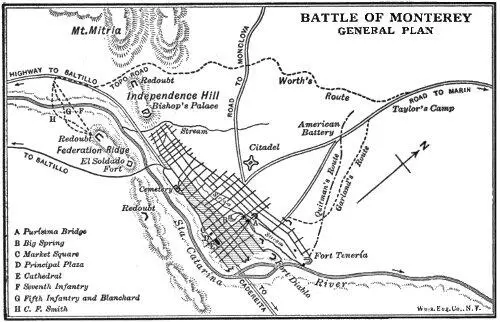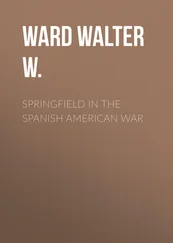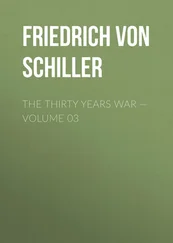The new commander at the north, however, was doubtless thinking for himself. In view of Santa Anna’s purpose to organize a grand army under his personal orders, this was Ampudia’s last opportunity to shine independently, and he did not wish to lose it. On learning the strength of Mejía’s and Taylor’s armies and the condition of the fortifications, he believed he could not only repulse the Americans but drive them beyond the Rio Grande. Mejía took the ground that it would be dishonorable to give up Monterey and the pass between that city and Saltillo without a fight, and that it might be very hard to recover the road through the mountains after giving the Americans an opportunity to fortify it. His officers, who met by Ampudia’s order in a council of war, appear to have shared this opinion; and the comandante general of Nuevo León, “as a Mexican and an officer in the national army,” protested “before God and men” against the instructions to retreat, leaving twenty guns that could not be taken away, and permitting the enemy to triumph “without hearing a shot from the Mexican arms.” So the die was cast; and on learning of Ampudia’s decision, together with his reasons, the war department endorsed it.13
On reaching the ground, Ampudia proceeded to inspect Mejía’s works. The importance of erecting fortifications at Monterey had been clearly seen. May 27 the minister of war gave orders accordingly, and Mejía promptly sent an engineer there to reconnoitre and draw a plan. Since, however, he could not afford to hire or even feed laborers, only soldiers carried on the work, and little was accomplished before the end of July; but people were then required to labor without pay, and the progress became more rapid. Ampudia now brought men from the neighboring towns also; and Monterey, excited by the news of Taylor’s advance, became a hive of industry.14

The opportunities for defence were excellent. Lying encompassed—except on the north and east—with steep, high spurs of the Sierra Madre, where the Saltillo road and the small but swift Santa Catarina River debouched from Rinconada Pass, the city formed a sort of rectangle somewhat more than a mile in length from east to west and about nine squares wide at the broadest. Only a short distance from the western end rose high and steep foothills, and some of these were now crowned with redoubts. Along the southern side the river and its high, rough bank were almost a sufficient protection; but they were supplemented with fortified buildings and yard walls, barricades at the ends of the streets, and for about half the way a solid parapet.15
The eastern part of the town was given special attention, for here entered the principal roads from the north. In the city proper nearly all the streets ran straight either at right angles or parallel, and in each of the central ones now rose a double line of overlapping barricades or breastworks of masonry, provided with embrasures and with ditches. Outside these a series of redoubts was constructed; and wherever the enemy seemed likely to come, the houses—almost always one story high—were loopholed and provided with ammunition. As they had been constructed very solidly of rubble-work, were protected with strong doors and iron-barred windows, and had flat roofs ( azoteas ) defended with sand-bags in addition to their stone parapets, they were veritable fortresses. At the heart of the town stood the cathedral with its elaborately carved façade, a chime in one spire and in the other a clock. This became the general magazine. In front of it was the main plaza, bounded on the western side by the prison; and beyond the prison lay the market square.15
The north side of the town had even stronger protection. Within 12-pounder range of almost every part of the city stood a solid pile of masonry, twenty-five or thirty feet high, blackened by time. This was an unfinished cathedral; and, taking it as a donjon, Mejía’s engineers threw round its columns and buttresses a quadrangular bastioned earthwork, intended for about thirty guns. The high parapet, eleven and a half feet thick, was faced on both sides with a soft gray tufa, in which cannon balls were expected to embed themselves. The ditch, though not wide enough and not completely excavated, was twelve feet deep. A garrison of four hundred with eight guns occupied the position; and although the two small magazines were not adequately protected against falling projectiles, and still other faults could be pointed out by an expert, this fort, commonly known as the citadel, was a powerful work, and, standing on a slight elevation, it could sweep the roads and the plain east and north of the town. A sort of telegraph enabled its commander, Colonel Uraga, to communicate with headquarters.16
Plenty of ammunition and an adequate store of provisions were accumulated. General Requena labored indefatigably in repairing discarded cannon, and about forty guns were found available. American deserters, who either had been or had become skilful gunners, were on hand to point some of them. There was one capital, underlying defect in the whole plan of defence. To hold all the works firmly required a much larger garrison than Ampudia had. More or less clearly the mistake was understood; but the active coöperation of the cavalry and the reserves was expected to offset it.17
Santa Anna’s policy was not merely to give up indefensible towns, and he ordered Ampudia to drive away all cattle that the Americans might otherwise obtain, destroy provisions and make the water supply useless whenever a place had to be abandoned, besides urging the inhabitants to leave their homes on Taylor’s approach, so as to show the Americans and the world that Mexico could never be subdued; and Ampudia not only endeavored to execute these instructions, but adopted measures of his own to supplement the efforts of his troops. The people were ordered to intercept messengers and convoys, capture small parties, and in every possible way imitate the royalists of Spain, who had made the soldiers of Napoleon so much trouble. Martial law went into effect, and thus in addition to other advantages the authority of the indifferent or disloyal governor was obliterated.18
Disloyalty and indifference among the people were combated at the same time, as Ampudia informed the government, by a twofold policy of “moderation” and “decisive energy,” in which the second ingredient appeared the more conspicuous. All the citizens of the region received a summons to come and help defend the nation. Notice was publicly given that any person voluntarily affording the enemy direct or indirect aid would be shot; everybody was required to denounce offences of this kind; and all authorities were ordered to inflict the penalty. A circular in English inviting Americans to desert met our troops, and the inhabitants were directed to succor and protect all such repentant foes. Taylor had but a few regulars, Ampudia proclaimed, and the rest of his army was “a mob of adventurers without valor or discipline.” Moreover the sacred cause of independence itself appealed for support, and could not be ignored. “Soldiers,” he cried, “Victory or death must be our only motto.” Thanks to this vigorous policy and the increased numbers of the army at Monterey, by the middle of September the temper of the people towards the Americans noticeably changed.19
In other respects, however, the General did not feel so well pleased. In person large and strong, with a soldierly mustache and goatee and a martial bearing, he figured well on horseback; but he was really small and mean, and his measure had been taken. His obtaining the command of the army—first at Matamoros and again recently—through political intrigue was fairly well understood. Many attributed the disaster of May 9 to his machinations against Arista. A dominant regard for personal safety was known to be one of his characteristics. His chief distinction, said the British minister at Mexico, arose from acts of violence done in abuse of power, and he now acted out his disposition. However the general public might be deceived, such a man could not impress the officers by talking about a sacred cause and “victory or death”; and old personal animosities against him supplemented the want of confidence based on public grounds. One of the officers wrote bluntly to him that the disgust and discouragement produced by the news of his appointment could be seen plainly on the faces of nearly all. Complaints against him were forwarded to the government. The press voiced this hostile sentiment, and fresh enmities were rapidly engendered.20
Читать дальше













